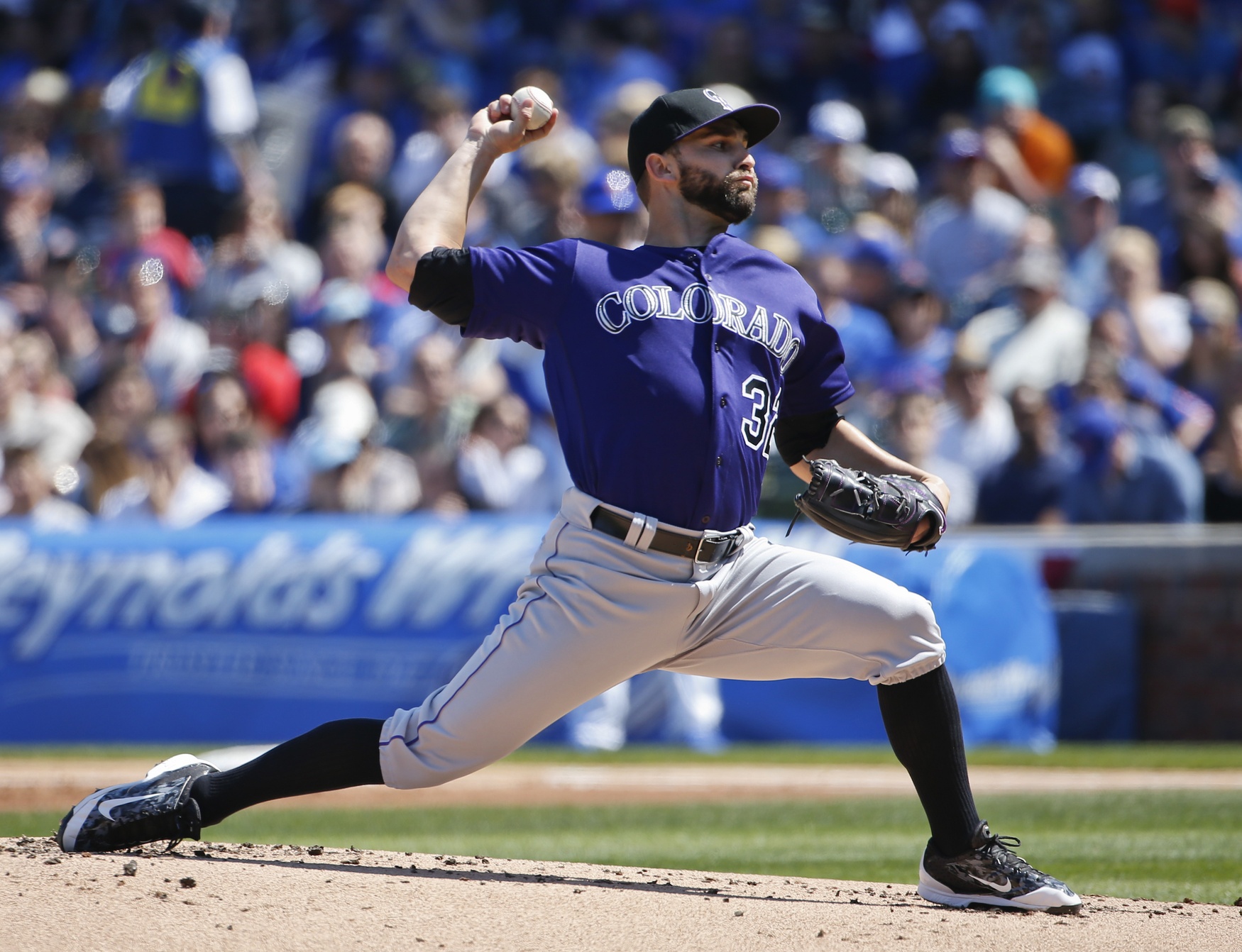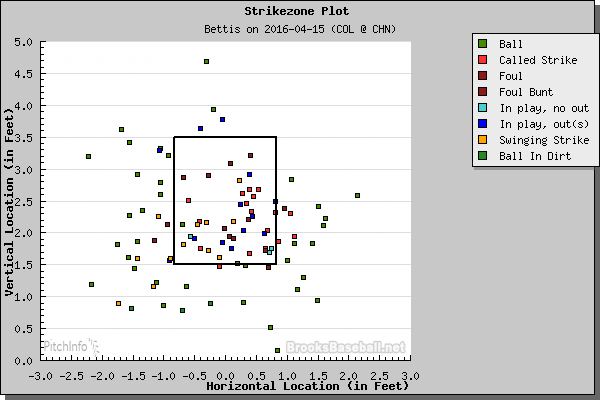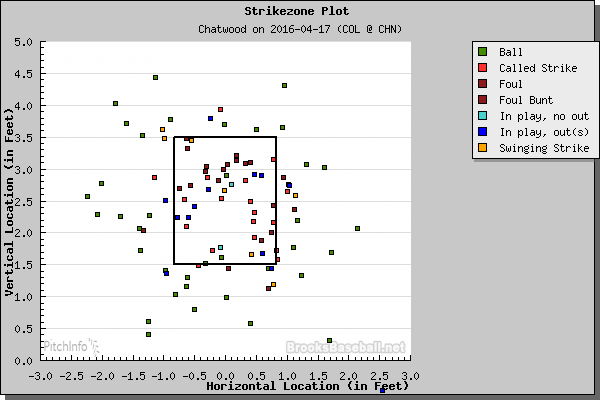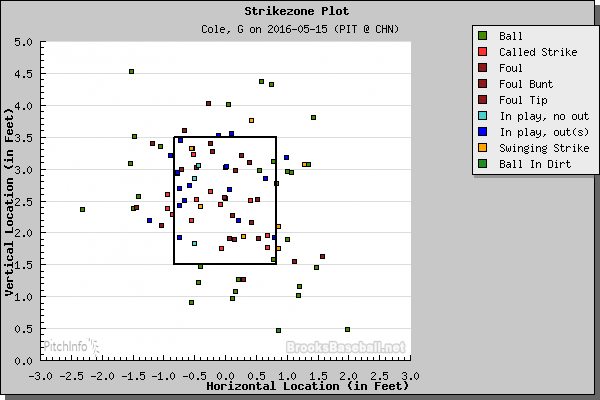Until a bit of a lull the last few games, the Cubs haven’t had a problem scoring runs this season. They’ve scored them every way you can imagine—patient at-bats, getting on base, hitting home runs, stealing the occasional bag, and so on. The Cubs work starting pitchers so hard, with only a handful of pitchers making it through the seventh inning against them so far this year. In short, the Cubs have one of the best offenses in the game. But there has been one weakness—a chink in the armor—with the Cubs offense. There’s a secret weapon that has killed the Cubs and left them ineffective at the plate.
Here it is: the weather. Yes, the weather—specifically, when it’s cold with a heavy wind blowing in—has held the Cubs offense back so far this season. Sure, you might point out that a cold breeze knocking down fly balls would theoretically be bad for both teams on the field. But the Cubs offense being neutralized by the weather early this season—something that has happened a few times—is more of a disadvantage for the team that likes to win games by getting on base and driving the ball.
The splits have been somewhat alarming to this point in the season. While the Cubs have dealt with the cool weather and the wind blowing in on most days at home this season, they’ve had a lot of games in warm weather, domed stadiums, or places where the wind has less of an effect on the road. Despite having played one more game at home this season, the Cubs have 45 doubles and 25 home runs on the road to just 31 and 20 at Wrigley. They’ve also posted a .468 slugging percentage on the road, which is good, and just a .398 slugging percentage at home, which is bad.
There are individual players that we can point at, as well. Anthony Rizzo has a 1.198 OPS on the road but just .789 at home. Kris Bryant is .903 to .777, Dexter Fowler is 1.197 to .766, and Jason Heyward is .806 to .510—pretty alarming differences for the team’s best players.
Let’s look at a few examples from this season where the Cubs have struggled to score runs.
April 15, 6-1 loss to the Colorado Rockies
The Rockies are one of the rare teams that have actually beaten the Cubs in a series this year. The first of the two losses to Colorado featured the classic pitching matchup of heavyweights Kyle Hendricks and Chad Bettis. Hendricks pitched fine, considering he’s the teams fifth starter, but Bettis stymied the Cubs all day. On a day when the wind was blowing from right-to-left and in for the most part, which makes a 52 degree day feel cooler than it really is, the Cubs just couldn’t collect enough baserunners.
Bettis allowed just three hits and three walks in six innings, despite the fact that he was really all over the place and that the Cubs’ patient batters worked him up to 98 pitches on the day. Of the 16 balls that were put into play that day, nine of them came in the air and seven on the ground—and all three hits Bettis allowed were on the ground that day. Getting the ball up in the air served him well, and the Cubs were unable to do anything about it.
April 17, 2-0 loss to the Colorado Rockies
Again, another day where the wind blew in from right field and made a cool day feel colder than it really is. If you’ve ever sat in the shade in April at Wrigley Field with the wind in your face, you know exactly what I mean. Jon Lester took the mound against Tyler Chatwood, and this would actually end up being quite the duel. Lester tossed 7 1/3 innings, allowing one run with 10 strikeouts while Chatwood went seven, allowing just two hits, one walk, and striking out seven.
Chatwood pounded the strike zone, with the most dense cluster of dots falling in the upper portion of the zone—many of those pitches being fouled off. When he missed outside the zone, he wasn’t afraid to miss badly. That’s because when the Cubs did make contact with his pitches, they were yet again hitting the ball in the air—they hit 11 of their 16 balls in play in the air on this day.
May 15, 2-1 loss to the Pittsburgh Pirates
Gerrit Cole started against the Cubs just a few days ago, taking some pleasure in shutting them out through eight innings in what probably felt to him like some sort of vengeance for Chicago beating him and knocking the Pirates from the playoffs last October. Again, Lester was on the losing end of a great game, tossing 6 2/3 and allowing just one earned run while striking out nine.
Cole threw 65 of his 95 pitches for strikes with a decent percentage of them coming high in the zone, resulting in zero walks in his eight innings. He also struck out seven batters, getting 10 flyouts to just seven groundouts—and one of the Cub hits was a double that was essentially a popup to center field in the first inning that shortstop Jordy Mercer completely lost track of in the gray sky. The weather for the game? A chilly 45 degrees with the wind blowing in at over 10 mph from right field.
These are just a few examples, of course, which makes up a pretty small sample over just 39 games played to this point in the season. But it’s pretty clear that marginal pitchers, such as Chatwood and Bettis, can figure out how to have success against the Cubs when the weather is cold and the wind blows in. Pounding the zone, taking away their ability to be patient and work the count in their favor, and forcing batters to get the ball in the air is a strategy the Cubs haven’t adjusted to yet.
The good news is that, as the summer sets in at Wrigley Field and the ivy comes into full bloom on the walls, the weather warms up and the wind blows out a bit more frequently. There will be days that the Cubs score in double-digits at home, and will look completely unstoppable. That’s why, despite a recent slump, getting off to a 28-11 start is incredibly important to this team. The distance Chicago has built between themselves and the Pirates and Cardinals might mean that not even the cold and the wind can stop them.
Lead photo courtesy Kamil Krzaczynski—USA Today Sports.



